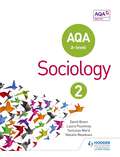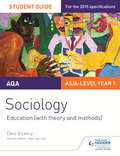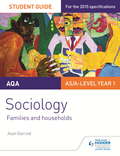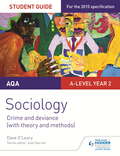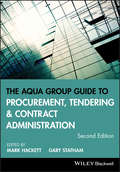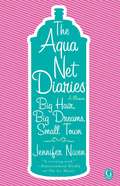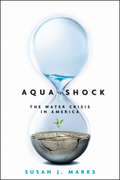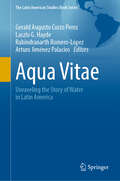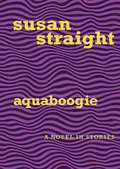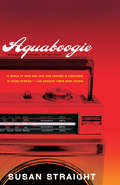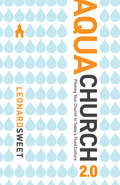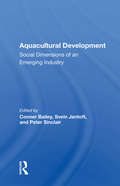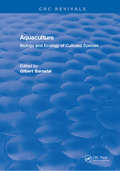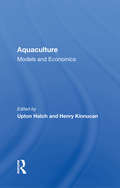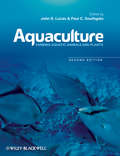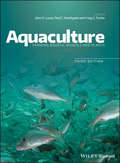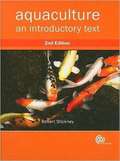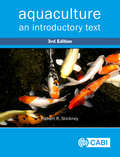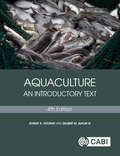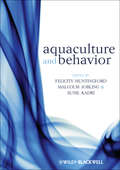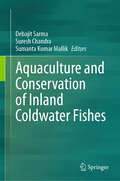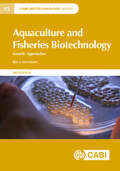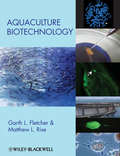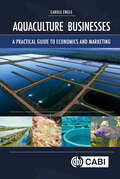- Table View
- List View
AQA Sociology for A-level Book 2
by David Bown Laura Pountney Tomislav Maric Natalie MeadowsExam Board: AQALevel: AS/A-levelSubject: SociologyFirst Teaching: September 2016First Exam: June 2017Build students' understanding with this concept-driven approach to the 2015 AQA A-level Sociology specification, written by a team of leading subject authors and approved by AQA.- Develop the knowledge required to master Year 2 topics with clear and accessible content coverage- Build confidence in the evaluative skills needed to assess sociological theories and research- Strengthen learning and revision with a wealth of practice and extension questions and activities
AQA Sociology Student Guide 1: Education (with theory and methods)
by Dave O'LearyWritten by experienced teacher Dave O'Leary, this Student Guide for Sociology:- Identifies the key content you need to know with a concise summary of topics examined in the AS and A-level specifications- Enables you to measure your understanding with exam tips and knowledge check questions, with answers at the end of the guide- Helps you to improve your exam technique with sample answers to exam-style questions- Develops your independent learning skills with content you can use for further study and research
AQA Sociology Student Guide 2: Families and households
by Joan GarrodWritten by experienced author Joan Garrod, this Student Guide for Sociology:- Identifies the key content you need to know with a concise summary of topics examined in the AS and A-level specifications- Enables you to measure your understanding with exam tips and knowledge check questions, with answers at the end of the guide- Helps you to improve your exam technique with sample answers to exam-style questions- Develops your independent learning skills with content you can use for further study and research
AQA Sociology Student Guide 3: Crime and deviance (with theory and methods)
by Dave O'LearyWritten by experienced teacher Dave O'Leary, this Student Guide for Sociology:-Identifies the key content you need to know with a concise summary of topics examined in the A-level specifications-Enables you to measure your understanding with exam tips and knowledge check questions, with answers at the end of the guide-Helps you to improve your exam technique with sample answers to exam-style questions-Develops your independent learning skills with content you can use for further study and research
The Aqua Group Guide to Procurement, Tendering and Contract Administration
by Gary Statham Mark HackettThis key text for the building team is an authoritative guide and gives a detailed account of the team's roles and responsibilities, with best industry practice required to ensure that building projects meet clients' expectations on time, cost and quality. The second edition of The Aqua Group Guide to Procurement, Tendering and Contract Administration has been edited, enlarged and updated by a high-profile author team with unparalleled experience of both private and public sectors, as well as of teaching on QS courses. It covers the entire building process from inception to final account and throughout, the emphasis is on current best practice. This edition has new material on the CDM regulations; JCT contracts; the RIBA Plan of Work; the RICS New Rules of Measurement; BIM; and Sustainability - as well as a general update for industry changes, especially on procurement; internationalisation; and PFI. With clear and thorough explanations, you are taken through self-contained chapters covering the detail of the briefing stage, procurement methods, tendering procedures, and contract administration. The period from starting a college course to successful completion of professional examinations represents a long and steep learning curve. The range of skills and the knowledge required to perform work efficiently and effectively might, at first, seem rather daunting. Although designed as an introductory textbook for undergraduates in construction, architecture and quantity surveying, The Aqua Group Guide offers an excellent overview of contract administration and will provide you with sufficient understanding to hold you in good stead for your early years in professional practice.
The Aqua Net Diaries
by Jennifer NivenFor anyone who has ever endured the insufferable pain, the soaring excitement, and the relentless shame of adolescence, critically acclaimed author Jennifer Niven shares her own hilarious and touching tales of teenage life at a Midwestern high school in the 1980s. If you had found Jennifer Niven in the looming halls of Richmond, Indiana's lone high school in 1985, she would have had enormous hair and been wearing her favorite yellow Esprit shirt. She would have been flirting with Tommy Wissel, and passing notes to her best friend Joey about whether Dean Waldemar was going to ask her to the dance. And her last name would have been McJunkin, because Niven is the pen name she planned to use whenever she finally graduated and became a famous writer/actress in some big city far, far away from farms, tractors, mullets, and food festivals. In her entertaining and heartfelt memoir, Jennifer takes readers back to that thrilling, excruciating, amazing, unnerving, awkward, and unforgettable time -- high school -- when life's greatest problems revolved around saying and doing the right thing, wrestling with geometric theorems, fretting over a bad hair day, waiting for the weekend's parties, trying not to die of boredom, and dying to be noticed by the most popular boy in school. It was a time of feeling fearless and invincible, with miles of firsts still to come. From meeting her best friend for life in Mr. Foos's first-period geometry class to partying one last time before college -- when not just the cool kids but the hoods, the geeks, and the normal kids gathered together to say good-bye -- Jennifer shares the funny, poignant, and silly stories of a simpler time and place. Irresistibly charming and utterly true, The Aqua Net Diaries is one girl's unique yet undeniably universal survival story of the best years of her life.
Aqua Shock, Revised and Updated: Water in Crisis (Bloomberg #155)
by Susan J. MarksAn objective look at America's rapidly shrinking water supply Once believed to be a problem limited to America's southwest, water shortages are now an issue coast to coast, from New England to California. In Aqua Shock: The Water Crisis in America, author Susan J. Marks provides a comprehensive analysis of the current conflicts being waged over dwindling water supplies. She presents the findings of university studies, think tanks, and research groups, as well as the opinions of water experts, including Peter Gleick, president of the Pacific Institute for Studies in Development, Environment, and Security. The book Explains where our water comes from and who controls it, as well as the cost of water on cash, commodities, and capitalism Describes the risks of running out of water Details how we can preserve and protect our most precious, yet most undervalued natural resource Right now, battles over water supplies rage across the country. Aqua Shock is an objective look at how we arrived at this crisis point and what we can do-and should be doing-to solve the water crisis in America.
Aqua Vitae: Unraveling the Story of Water in Latin America (The Latin American Studies Book Series)
by Gerald Augusto Corzo Perez Laszlo G. Hayde Rabindranarth Romero-López Arturo Jiménez PalaciosThis comprehensive book presents an analytical journey through the relationship between water and Latin American societies, offering an engineering perspective on historical water resource utilization. The book unravels the integral role water has played in the cultural, technological, and socio-economic development of the region, providing a foundational reference for engineers, academics, and researchers. The book's exploration into water's perception and usage throughout history provides key insights into how human activity has impacted water resources and vice versa. It presents a meticulous examination of water as both a natural and cultural phenomenon, identifying its essential role in sustaining life and ecosystems, as well as its potential for causing devastation through disease and natural disasters. We delve into the complexities of water's role in society, illustrating how it is woven into the fabric of everyday life, religious ceremonies, and global events. The book also underscores the varying significance and implications of water across different regions within Latin America. The narrative unfolds across three major sections: Technology, Water Management, and Socio-Cultural-Economical Impact. The 'Technology' section examines the evolution of water-related technologies and their significant socio-economic implications. The 'Water Management' part offers a holistic perspective on water resource management practices, both historical and contemporary. The final section delves into the societal implications of water use, including conflicts arising from political and economic decisions related to this crucial resource. Designed for engineers, environmental scientists, and policy-makers, this book provides a unique blend of historical context, technical knowledge, and socio-cultural insights. It offers an invaluable resource for those seeking to understand the interplay between engineering practices, water resources, and societal developments in Latin America. It serves as a springboard for further research and informed decision-making in water resource management and policy, fostering a greater understanding of the myriad ways in which water influences and is influenced by human activity.
Aquaboogie
by Susan StraightSusan Straight's exquisite debut: A collection of short fiction about a hardscrabble town whose inhabitants try to reconcile their old ways with some disconcerting new ones These fourteen interconnected stories take place in Rio Seco, a fictional city in California based on the author's hometown of Riverside. With its fire-prone mountains, palm trees, and pig farms, the languid pace of life in Rio Seco has the distinct air of the South, and indeed many of the town's older residents hail from Mississippi. But despite a vibrant sense of community, both old and young are hemmed in by poverty and strife. Young people struggle to survive shootings, siblings are lost to cigarettes laced with embalming fluid, and older relatives are pushed out of their homes to make way for development. With exemplary compassion, Straight brings these characters' stories to searing life.
Aquaboogie: A Novel In Stories
by Susan Straight“Aquaboogie is a love story in fragments . . . A book by a writer whose love for her characters infuses her work with the dignity and urgency they so clearly deserve.” —The New York Times Book ReviewFull of defiance and tenderness, Aquaboogie chronicles the triumphs and tragedies of the residents of Rio Seco. In “Aquaboogie,” art student Nacho finances his class out East by working as a janitor, subject to torment by his white coworkers. In “Back,” elderly Pashion sleeps wrapped around the body of her dying husband L. C., all the while recalling their 49 years of marriage and thinking about the sleeping pills she has secreted away for when life becomes unbearable. In “The Box,” Shawan carries her radio everywhere; since her best friend was gunned down, music is the only thing that can get her through the day. In these and other stories in this powerful collection, the author gives voice to those on the margins while demonstrating her great affection for her characters.
AquaChurch 2.0
by Leonard SweetWe live in a fast-paced, fluid world. A postmodern place where people are drifting, making mid-course corrections in every aspect of life, from careers, to relationships, to beliefs. As church leaders, we must continually reshape our ministries to reach a society adrift. We must move from being adaptive to being proactive, remaining flexible while delivering a uncompromising message. AquaChurch 2.0 is a guide for developing responsive and relevant church leadership. Fusing Biblical wisdom and modern-day insights, acclaimed author Leonard Sweet explores the essentials of leadership arts, including vision, creativity, and teamwork. This updated and revised edition will enable your ministry to navigate today's cultural currents, provide a beacon to your community, and connect with a postmodern world.
Aquacultural Development: Social Dimensions Of An Emerging Industry
by Conner Bailey Svein Jentoft Peter SinclairIn this volume, an international group of contributors explores the newly emerging aquaculture industry. Focusing on the social and environmental dimensions of aquacultural development in both industrialized and nonindustrialized nations, they examine issues of social equity, user-group conflict, environmental impacts of production, and the mediating role of the state. They also discuss aquaculture's role in development activity-especially in sustainable development, where it can enhance community viability, coherence, and solidarity. Asserting the need for careful planning and recognizing impending political and moral choices, the contributors assess the decisionmaking process for public authorities and development agencies and consider the social consequences of these decisions. Policymakers responsible for promoting and managing this growing industry will find this volume invaluable as they begin to research and design appropriate institutional structures. In addition, scholars interested in the overall adoption and diffusion of new technologies will find here a rich source of information about a system that shares attributes with but also differs significantly from agricultural and fisheries production systems.
Aquaculture: Biology and Ecology of Cultured Species
by Gilbert BarnabeThis unique book introduces the biological and ecological basis of the production process in water, and the biology of cultured species. It bridges the gap between research data and aquaculture techniques, and covers problems arising in aquaculture production, such as filtering molluscs. It also introduced modern aspects of oceanography that are important for understanding the production process. The book starts with a section dedicated to the production of living material and matter in the aquatic environment. It then goes on to explore in detail the biological basis of mollusc, crustacean and fish cultures, and the reproduction and nutrition of bivalve molluscs. Also discussed are the intensive and extensive aquaculture producing processes in fresh and marine waters, and finally the pathology reared animals. Up-to-date data are provided and explained to the student using graphs and copious illustrations. The work is especially orientated toward the student reader and provides a comprehensive and authoritative text on the subject.
Aquaculture: Models And Economics
by Upton HatchPresenting state-of-the-art research on the economics of producing and marketing aquacultural products, this volume addresses critical issues concerning profitability, market acceptance, and economic modeling of various aquacultural products. Research approaches range from firm-level bioeconomic modelling to market-level econometric modelling of industry growth and product substitution. The studies highlight the institutional structures and public policy issues that will shape growth and development of aquaculture into the twenty-first century, including trade policies, food safety, and environmental quality.
Aquaculture: Farming Aquatic Animals and Plants
by John S. Lucas Paul C. SouthgateThe output from world aquaculture, a multi-billion dollar global industry, continues to rise at a very rapid rate and it is now acknowledged that it will take over from fisheries to become the main source of animal and plant products from aquatic environments in the future. Since the first edition of this excellent and successful book was published, the aquaculture industry has continued to expand at a massive rate globally and has seen huge advances across its many and diverse facets. This new edition of Aquaculture: Farming Aquatic Animals and Plants covers all major aspects of the culture of fish, shellfish and algae in freshwater and marine environments. Subject areas covered include principles, water quality, environmental impacts of aquaculture, desert aquaculture, reproduction, life cycles and growth, genetics and stock improvement, nutrition and feed production, diseases, vaccination, post-harvest technology, economics and marketing, and future developments of aquaculture. Separate chapters also cover the culture of algae, carps, salmonids, tilapias, channel catfish, marine and brackish fishes, soft-shelled turtles, marine shrimp, mitten crabs and other decapod crustaceans, bivalves, gastropods, and ornamentals. There is greater coverage of aquaculture in China in this new edition, reflecting China's importance in the world scene. For many, Aquaculture: Farming Aquatic Animals and Plants is now the book of choice, as a recommended text for students and as a concise reference for those working or entering into the industry. Providing core scientific and commercially useful information, and written by around 30 internationally-known and respected authors, this expanded and fully updated new edition of Aquaculture is a book that is essential reading for all students and professionals studying and working in aquaculture. Fish farmers, hatchery managers and all those supplying the aquaculture industry, including personnel within equipment and feed manufacturing companies, will find a great deal of commercially useful information within this important and now established book. Reviews of the First Edition "This exciting, new and comprehensive book covers all major aspects of the aquaculture of fish, shellfish and algae in freshwater and marine environments including nutrition and feed production." —International Aquafeed "Do we really need yet another book about aquaculture? As far as this 502-page work goes, the answer is a resounding 'yes'. This book will definitely find a place in university libraries, in the offices of policy-makers and with economists looking for production and marketing figures. Fish farmers can benefit greatly from the thematic chapters, as well as from those pertaining to the specific plant or animal they are keeping or intending to farm. Also, they may explore new species, using the wealth of information supplied." —African Journal of Aquatic Science "Anyone studying the subject or working in any way interested in aquaculture would be well advised to acquire and study this wide-ranging book. One of the real 'bibles' on the aquaculture industry." —Fishing Boat World and also Ausmarine
Aquaculture: Farming Aquatic Animals and Plants
by John S. Lucas Paul C. Southgate Craig S. TuckerA clear illustration of the important role of aquaculture in supporting food security, livelihoods, and economic development around the world This new edition of Aquaculture: Farming Aquatic Animals and Plants covers important aspects of the culture of fish, shellfish, and algae in freshwater and marine environments. Subject areas covered include principles of aquaculture, water quality, environmental impacts of aquaculture, desert aquaculture, reproduction, life cycles and growth, genetics and stock improvement, nutrition and feed production, diseases, vaccination, post-harvest technology, economics and marketing, and future developments of aquaculture. Separate chapters also cover the culture of algae, carps, salmonids, tilapias, catfish, marine and brackish fishes, soft-shelled turtles, barramundi, marine shrimp, mitten crabs, and other decapod crustaceans, bivalves, gastropods, and ornamental species. This edition also provides greater coverage of aquaculture in China, reflecting the country’s importance in the global scene. Providing core scientific and commercially useful information, and written by 35 eminent international authors, this expanded and fully updated Third Edition of Aquaculture is essential reading for all students and professionals studying and working in aquaculture. Fish farmers, hatchery managers, and those in aquaculture support and supply industries, such as feed manufacturing, will find an abundance of commercially useful information within this important and now established book. Describes the multitude of developments that have occurred within the aquaculture field over the last 15 years Includes a major revision of production statistics and trends, discussion of technical developments, and revised and extended coverage provided by broader international authorship Brings together 35 internationally recognized contributors, including a number of new contributors Aquaculture: Farming Aquatic Animals and Plants, Third Edition is a recommended text for students of the subject and a concise reference for those working in or entering into the industry.
Aquaculture
by Robert R StickneyProviding a broad and readable overview of the subject, this updated second edition of Aquaculture: An Introductory Text covers issues associated with sustainable aquaculture development, culture systems, hatchery methods, nutrition and feeding of aquaculture species, reproductive strategies, harvesting, and many other topics. While its main focus is on the culture of fish, molluscs, and crustaceans for food, the book also covers other forms of aquaculture, such as the production of seaweeds, recreational fish and ornamental species, and live foods such as algae and rotifers that are used to feed larval shrimp and marine fish. Printed in a new, larger format and illustrated with many photos and diagrams, this will be an essential resource for undergraduate students of aquaculture and related topics. The scope is global and much of the information is based on first-hand experiences of the author.
Aquaculture: An Introductory Text
by Robert R StickneyProviding a broad and readable overview of the subject, this updated third edition of Aquaculture: An Introductory Text covers issues associated with sustainable aquaculture development, culture systems, hatchery methods, nutrition and feeding of aquaculture species, reproductive strategies, harvesting and many other topics. While its main focus is on the culture of fish, molluscs and crustaceans for food, the book also covers other forms of aquaculture, such as the production of seaweeds, recreational fish and ornamental species, and live foods such as algae and rotifers that are used to feed larval shrimp and marine fish. Thoroughly updated and revised, the third edition of this essential textbook now includes: - Increased coverage of species under culture - Increased scope to cover species for enhancement, recreational fishing, commercial fishing and aquaria - Newly developed culture systems - Information on predictive impacts of climate change - Updated aquaculture production statistics Aquaculture remains one of the most rapidly growing agricultural disciplines and this book remains an essential resource for all students of aquaculture and related disciplines.
Aquaculture: An Introductory Text
by Robert R Stickney Delbert Gatlin IIIProviding a broad and readable overview of the subject, this updated fourth edition of Aquaculture: An Introductory Text covers issues associated with sustainable aquaculture development, culture systems, hatchery methods, nutrition and feeding of aquaculture species, reproductive strategies, harvesting, and many other topics. While its main focus is on the culture of fish, molluscs and crustaceans for food, the book also covers other forms of aquaculture, such as the production of seaweeds, recreational fish and ornamental species, as well as live foods, such as algae and rotifers that are used to feed larval shrimp and marine fish. Thoroughly updated and revised, this essential textbook now includes: - Increased coverage of open-ocean cage culture and sea lice issues with salmon culture; - Coverage of the significant progress made in nutrition, including the move away from fishmeal as protein and fish oil as lipids in feed; - Information on biofloc technology uses, predictive impacts of climate change, probiotics, and the impact of COVID-19 on the aquaculture community; - Updated aquaculture production statistics and lists of approved anaesthetics. Aquaculture remains one of the most rapidly growing agricultural disciplines, and this book remains an essential resource for all students of aquaculture and related disciplines
Aquaculture, 3rd Edition
by Robert R. StickneyProviding a broad and readable overview of the subject, this updated third edition of Aquaculture: An Introductory Text covers issues associated with sustainable aquaculture development, culture systems, hatchery methods, nutrition and feeding of aquaculture species, reproductive strategies, harvesting and many other topics. While its main focus is on the culture of fish, molluscs and crustaceans for food, the book also covers other forms of aquaculture, such as the production of seaweeds, recreational fish and ornamental species, and live foods such as algae and rotifers that are used to feed larval shrimp and marine fish. Thoroughly updated and revised, the third edition of this essential textbook now includes: - Increased coverage of species under culture - Increased scope to cover species for enhancement, recreational fishing, commercial fishing and aquaria - Newly developed culture systems - Information on predictive impacts of climate change - Updated aquaculture production statistics Aquaculture remains one of the most rapidly growing agricultural disciplines and this book remains an essential resource for all students of aquaculture and related disciplines.
Aquaculture and Behavior
by Felicity HuntingfordModern aquaculture is faced with a number of challenges, including public concern about environmental impacts and the welfare of farmed fish. A fundamental understanding of fish biology is central to finding ways to meet these challenges and is also essential for maintaining the industry's sustainability. Furthermore, the behaviour of fish under culture situations has long been ignored despite heavy commercial losses that can result from fish stressed and hence disease-prone, due to bad husbandry techniques. This important book summarises the current understanding of the behavioural biology of farmed species and illustrates how this can be applied to improve aquaculture practice. Informative and engaging, Aquaculture & Behavior brings the reader up-to-date with major issues pertaining to aquaculture. Everyone from fish farmers to upper level students will find this book a valuable and practical resource. Libraries in universities and research establishments where animal behavior, aquaculture, veterinary and biological sciences are studied and taught should have copies of this work on their shelves.
Aquaculture and Conservation of Inland Coldwater Fishes
by Suresh Chandra Debajit Sarma Sumanta Kumar MallikThis book provides the latest information on trans-Himalayan Hindu Kush Region (HKR) fisheries including the Indian Himalayan Region (IHR) as well as the historical context of its sustainable development for improving livelihood and nutritional security. The book serves as an important document to provide knowledge and information about the major concerns of environmental and anthropogenic factors that have impacted the population of certain important fishes in the ecosystem and the strategies and policies required for the conservation of these important groups of fishes, viz., Mahseer, snow trout, minor carp, catfishes, etc. The chapters describe the information to the readers on potential cold water and cool water fish species suitable for large-scale farming and propagation addressing the issues of diseases, nutrigenomics, and nanobiotechnology. This book also addresses the prospects and potential of recreational fishing in India and the scope for its improvement to generate more employment and income citing the success stories and primary information from reputed anglers. Finally, the book also elucidates a comprehensive yet representative description of many challenges associated with inland coldwater- cool water fisheries and aquaculture in HKR, IHR, and its way forward.
Aquaculture and Fisheries Biotechnology: Genetic Approaches (CABI Biotechnology Series)
by Rex DunhamThe genetic improvement of fish for aquaculture and related fisheries has seen huge advances over recent years. Building upon the previous two editions of Aquaculture and Fisheries Biotechnology: Genetic Approaches, this 3rd edition offers a presentation of traditional selective breeding, modern genetic biotechnology, genomics, gene transfer and gene editing, and the latest developments in genetic biotechnology such as epigenetics, xenogenesis and genome-wide association study coupled with commercial application, the impact of government regulation and expectations for the future. It provides a firm grounding in relevant aspects of classical genetics, before focusing on particular aspects such as sex reversal and breeding as applied in aquaculture and fisheries. It also explores how more recent molecular genetics, genomics and biotechnology techniques can be used and combined in improvement programmes for fish and aquaculture species. A glossary explains the latest terminology used in biotechnology and genetics. This book will be useful for research scientists and students in marine biotechnology, aquaculture biotechnology, and fish genetics and breeding.
Aquaculture Biotechnology
by Garth L. Fletcher Matthew L. RiseThis important book looks at a broad spectrum of biotech research efforts and their applications to the aquaculture industry. Aquaculture Biotechnology provides key reviews that look at the application of genetic, cellular, and molecular technologies to enable fish farmers to produce a more abundant, resilient, and healthier supply of seafood. Aquaculture Biotechnology is divided into seven sections and nineteen chapters that cover topics ranging from broodstock improvement to fish health and gene transfer. With chapters provided by leading researchers and skillfully edited by top scientists in the field, this will be a valuable tool to researchers, producers, and students interested in better understanding this dynamic field of aquaculture.
Aquaculture Businesses: A Practical Guide to Economics and Marketing
by Carole EngleThis exciting new book provides practical guidance and advice for individuals seeking to manage and develop a successful aquaculture business. Starting with an overview of the challenges faced by aquaculture business operatives, the book then contrasts the different issues faced by new start-up businesses and those that have been in business for many years. The book includes step-by-step guidance and advice on: - how to find key markets, locate customers and determine their preferences; - how to develop estimates of capital requirements for land, construction of buildings and production facilities; - how to purchase equipment; - how to develop a financing plan, including the key financial statements that show early indication of potential problems; - the types of permits and regulations that may be necessary; - delays and costs that can occur from ensuring compliance; - keeping an eye on emerging trends and current consumer preferences; and - monitoring external threats and opportunities. Written by Carole Engle, Aquaculture Businesses is an essential resource for aquaculture entrepreneurs and management-level decision makers for new start-up businesses globally. It is also applicable for existing businesses that need to grow and change with market dynamics. All aquaculture farm owners, and suppliers to the industry, should have this excellent resource to hand. Libraries in all universities and research establishments where aquaculture, business studies, economics or marketing are studied and taught should have copies of this book on their shelves.
